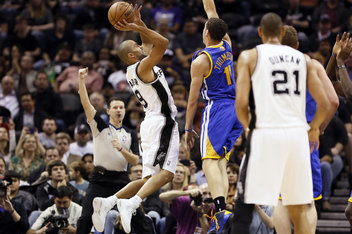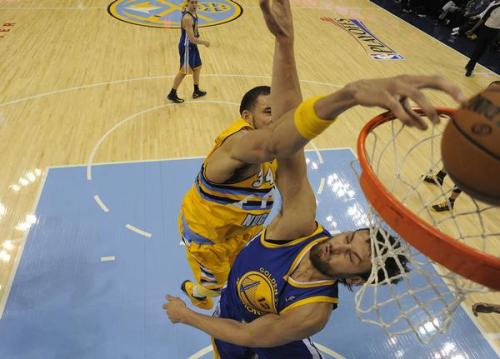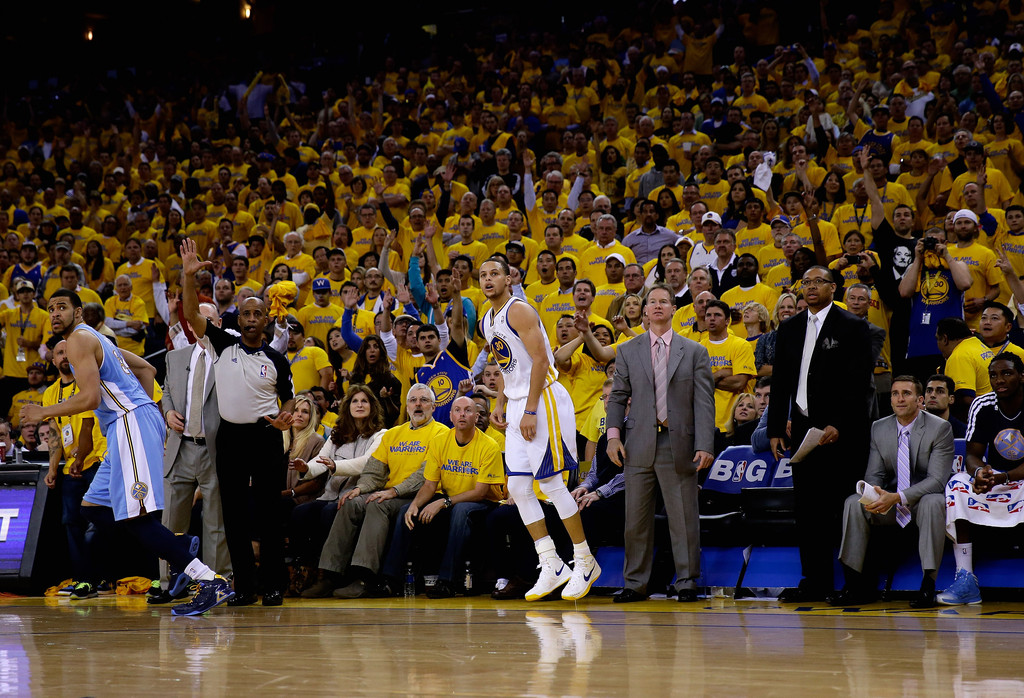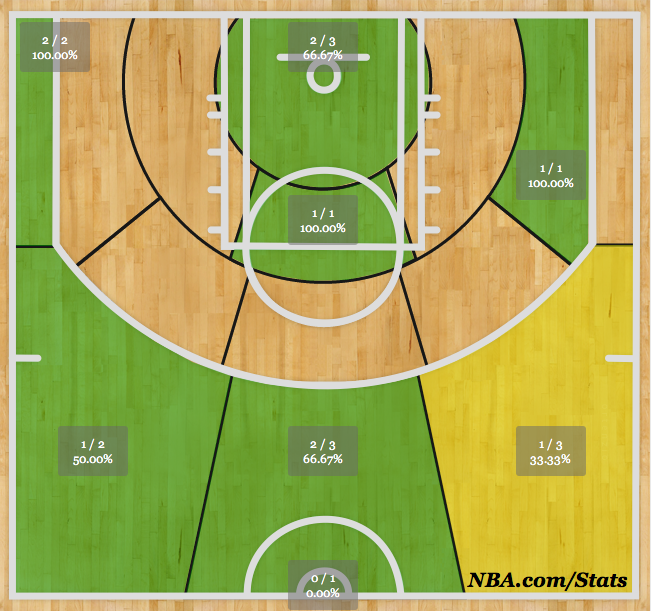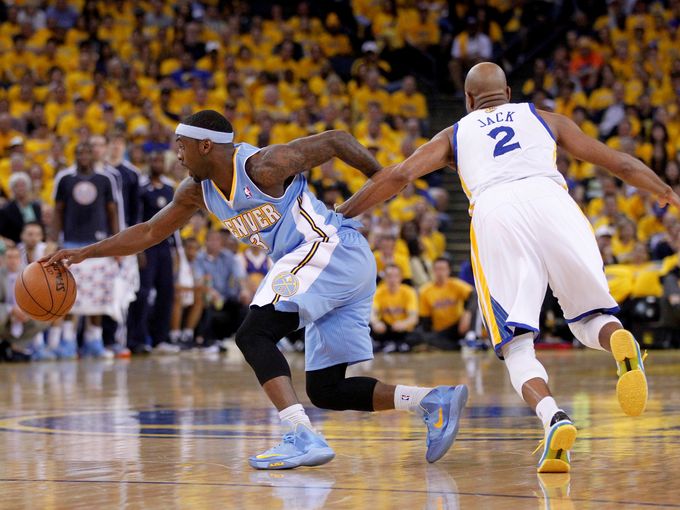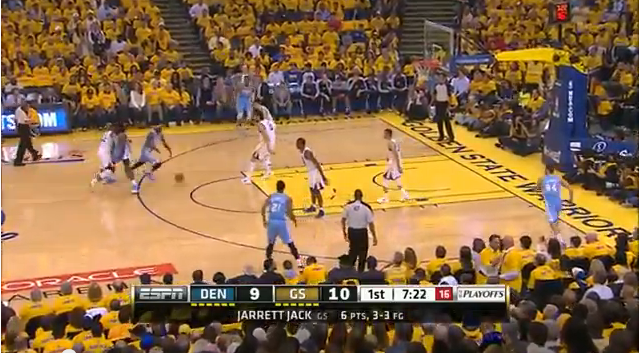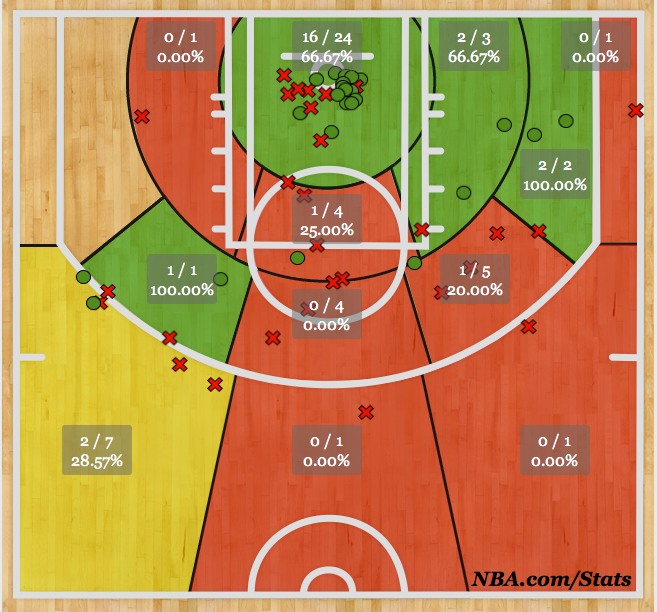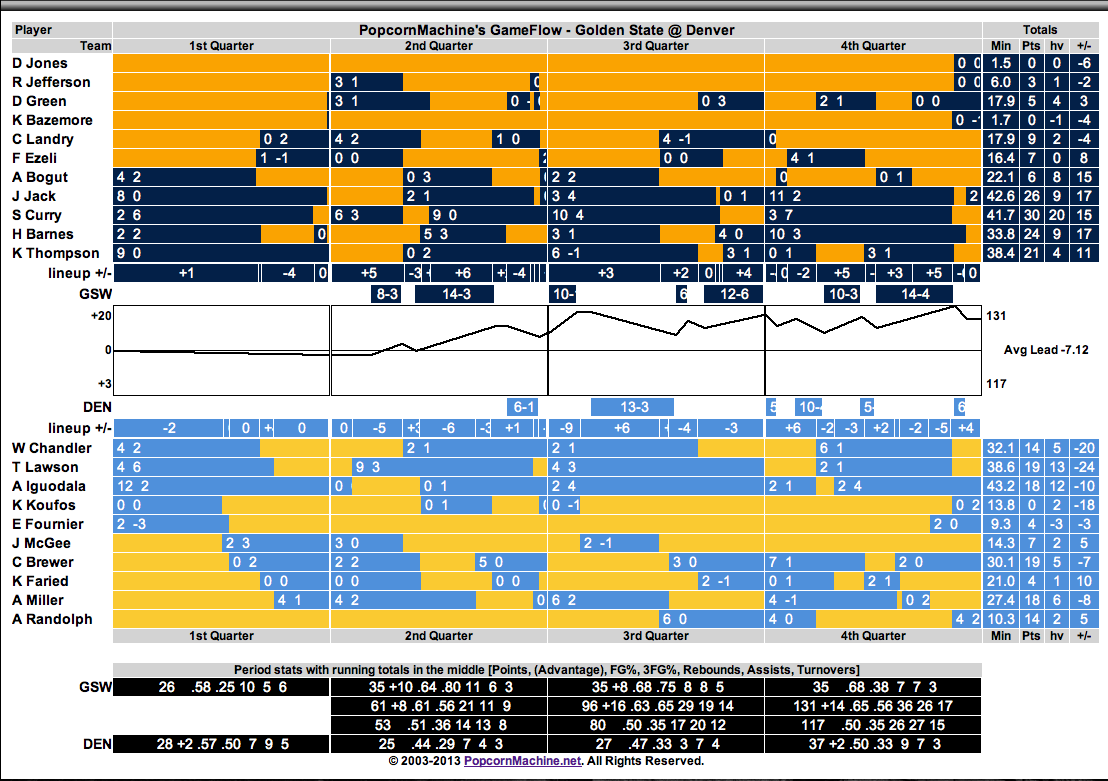(Written for Blue Man Hoop)
Everything was in place for the classic Warriors’ victory. An efficient first half carried the Warriors to a four-point halftime lead, and in the third quarter, as has become custom during the playoffs, Stephen Curry exploded. Curry scored 22 points in the third, leading the Warriors to a 12 point lead heading into the fourth quarter. With 3:57 left, the Warriors had stretched the lead to 16. Curry was in absolute control of the offense, Klay Thompson was shutting down Tony Parker, and the role players were playing perfectly.
Then, just as the Warriors looked set to steal a game in San Antonio, everything changed. Tony Parker drove to the basket, and drew a bump from Klay Thompson, his sixth foul. This was the first in a series of mistakes that significantly changed the outlook of the playoff series. With Thompson no longer guarding him, Tony Parker began attacking offensively. Assisted by the Warriors’ poor offensive execution, the Spurs came all the way back to send the game to overtime. The overtime was itself a microcosm of the Warriors’ performance. They jumped out to an early five-point lead, but could not close the game.
It was Manu Ginobli’s wing 3-pointer with 1.2 seconds left that finished the Warriors, but the defeat was instigated by poor decisions and execution, by both players and coaches, over several minutes. According to mysynergysports.com, the Warriors ran 15 isolation plays through the first three quarters, and 15 in the fourth quarter alone. As effective as the offense was through the majority of the game, it stagnated in the fourth, forcing the Warriors into several contested shots, with few alterior options.
Though more dramatic, this Game 1 loss mirrored the defeat in the playoff-opener versus Denver, when Andre Miller and the Nuggets took advantage of Warriors’ mistakes to defend their home court. In this exaggerated version of the prior loss, the Warriors find themselves in the same situation as round one, and hope to replicate the final result.
Key Stretch:
There were several turning points in this game. Starting around the 4-minute mark, San Antonio began its original comeback. In overtime, the Warriors missed back-to-back shots to allow the Spurs to take the lead, and in double overtime, the final stretch directly determined the victor. Because so many different factors impacted the final result, and partly because assigning blame will help with this emotionally distraught fan’s recovery, we will look at the final play, and attempt to determine who is at fault for the Warriors’ blown coverage.
This is the Spurs’ initial set. Ginobli is at the elbow, and is going to set a screen for Tony Parker, who is at the left short-corner. Boris Diaw runs to the top of the key to set the second staggered screen for Parker.
Everything goes wrong quickly for the Warriors. Kent Bazemore and Harrison Barnes did not switch the Ginobli screen for Parker, however, before Diaw even sets the screen, Jack is expecting to switch. He is clearly in position to pick up Parker, however Barnes is trying to chase Parker above the screen.
The apparent miscommunication between Jack and Barnes leaves Kent Bazemore to guard both Ginobli and Diaw. Diaw dives to the rim, forcing Bazemore to commit and deny the layup, leaving Ginobli wide open. Bazemore does make an impressive effort to close out, but Ginobli hits the shot.
This failure may have been the result of a strategic flaw by the Warriors. Mark Jackson may have told his players to “switch everything,” as Jack clearly intends to switch without regard to Diaw’s positioning. However, the definition of “everything” may vary among players. Diaw never makes contact with Barnes on the screen, so Barnes may have thought that he was not supposed to switch. San Antonio’s positioning suggests that they intended to set a screen, and because Jack must anticipate the screen to properly switch, he leaves Diaw without knowing the screen will never occur.
Notable Performances:
With 44 points on 35 shots, Stephen Curry had the highest scoring output of any player this postseason, but missed six-of-seven shots over a vital stretch of the game. Harrison Barnes played 53 minutes, and scored 19 points on 8-of-14 shooting. Klay Thompson played impressive defense on Tony Parker, and remained relatively efficient offensively.
For the Spurs, Kawhi Leonard scored 18 points on 7-of-11 shooting, and made many impactful plays to end the game. Tony Parker only shot 11-of-26, but carried the Spurs’ offense down the stretch, and Danny Green made 6-of-9 three pointers.




